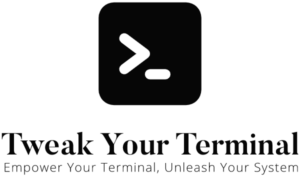The command-line interface in Unix-based systems like macOS or Linux offers a plethora of tools for file management. One such tool, the rm command, is essential for removing files or directories from your system. This article will delve into the usage and variations of the rm command.
Understanding the ‘rm’ Command
The rm command, short for “remove”, is a command-line utility for removing files or directories. Although it’s a simple command at its core, it can be used in several ways to provide greater flexibility and control. Here’s the basic syntax:
rm fileNameHere, fileName is the name of the file you want to delete.
Removing Files
The primary function of the rm command is to remove files. Here’s an example:
rm file1.txtThis command will delete the file1.txt file. Be cautious when using rm, as it does not move the file to the Trash—it permanently deletes it.
Removing Directories
By default, rm will not remove directories. To remove a directory and its contents, use the -r (or --recursive) option:
rm -r directoryNameHere, directoryName is the name of the directory you want to remove. Again, use this command with caution, as it will permanently delete the directory and its contents.
Prompt Before Removal
To reduce the risk of unintentionally deleting important files or directories, you can use the -i (or --interactive) option, which will prompt for confirmation before each removal:
rm -i fileNameForce Removal
Sometimes, files or directories cannot be removed due to file permissions. In such cases, you can use the -f (or --force) option, which will ignore nonexistent files and arguments and proceed with the deletion:
rm -f fileNameForce Removal and Its Limitations
However, it’s important to note that the -f option might not always work. If you don’t have write permissions to the directory that contains the file, or if special attributes (like immutable or append-only attributes) are set on the file, even the -f option won’t allow you to remove it. In such cases, you’d need to adjust the directory permissions or file attributes first, and that typically requires superuser (root) privileges.
Keep in mind that using -f can be risky, as it forces deletion without confirmation, so always ensure you’re deleting the correct files to avoid data loss.
Conclusion
The rm command is a powerful and versatile tool for managing files and directories in Unix-based systems. Whether you’re deleting a single file, recursively removing a directory, or forcing the removal of a stubborn file, rm offers the options to get the job done. However, with its power comes the risk of irreversible file deletion, so always use rm with caution. Happy file managing, and remember: think twice before hitting enter!
